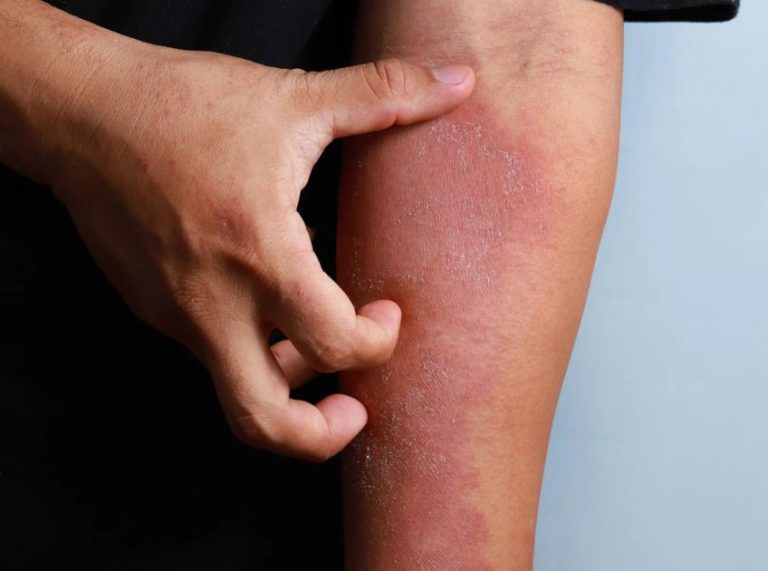
Important: This article is for informational purposes only. Please read our full disclaimer for more details.
Using home remedies can help ease symptoms without needing a doctor or prescription. Epsom salt bath for UTI is a common remedy with many uses. But is it effective for relieving pain during a UTI? Let’s find out.
Although there are multiple ways to control urinary tract infections, Epsom salt bath has also shown good results. Epsom salt is a compound consisting of magnesium, sulfur, and oxygen. It is believed that this salt helps improve the body’s detoxification process and promotes healing.
Even though no scientific proof talks about Epsom salt’s effectiveness in treating UTIs, some people swear by it. It is believed that the combination of two ingredients- magnesium and sulfate stimulates detoxification pathways, helping relieve UTI symptoms.
- Magnesium- It is an essential component required for carrying out multiple functions in the body. From bone health to nerve functioning, magnesium helps in many ways. Also, it helps in removing the toxins from the body.(1)
- Sulfate- It helps strengthen the walls of the f and releases toxins easily and quickly.(2)
How To Take Epsom Salt Bath for UTI?
Make sure you use Epsom salt, which is meant for human use. So, read the labels carefully and ensure they are per the standards the United States Food and Drug Association (FDA) set. You can buy it online or from drugstores or pharmacies.(3)
For Epsom salt bath take the following steps-
- Add two cups of Epsom salt to a standard-size bathtub and let it dissolve.
- Make sure the water is warm and not hot. The temperature could be between 33 and 37 degrees Celsius.
- Now soak inside the bathtub for 10 to 15 minutes or longer if desired.
- Rinse thoroughly and apply moisturizer as Epsom salt can make the skin dry.
To enhance the effects of Epsom salt, you can add other ingredients like essential oil like lavender, vanilla, bergamot, frankincense, and eucalyptus. These therapeutic oils can make the bath more relaxing. 3 to 4 drops of essential oil in 1 ounce of water will suffice.
Apart from essential oils, you can also add olive oil, coconut oil, and sweet almond oil. Olive oil is the best bet as it contains antioxidants and helps to soften the skin when added to a bath.
Note: If you add any oil, be cautious while getting in or out of the bathtub to avoid slipping. Oils can make the bath area slippery; therefore, it is generally not recommended for children and old adults.
Can an Epsom Salt Bath Help With a UTI?
Generally, a person suffering from a UTI or prone to getting a UTI is advised to avoid any kind of bath because whatever is in the water has a chance to move up the urinary tract.
Moreover, the longer you soak, the greater are the chances of bacteria making their way up, whether it is soap, oil, filth, or grime. It could also be the leftovers of a person who was in the bathtub before you.
It is why people with UTIs are also advised to avoid pools and hot tubs and always take a shower instead of a bath. If anything that can disturb the environment down there and make you feel irritated may lead the way to an infection.
People with recurring UTIs should take special care of this as a little residue can degenerate into an infection.
How To Use Epsom Salt for Urinary Tract Infection
How It Helps
Epsom salt is known for soothing infections as it has anti-inflammation properties. It is a good option to use in bath water as it consists of magnesium that miraculously heals sore muscles and cramps.
At the same time, Epsom salt has anti-microbial properties, which means it will not lead harmful bacteria to reach your urinary tract to cause any infection. However, at the same time, it could kill the beneficial bacteria as well.
Therefore, taking an Epsom salt bath is okay when you have a UTI, but you should not make it a habit. If you use Epsom salt specifically for treating bladder infections, try adding baking soda, sea salt, white vinegar, or apple cider vinegar to the water to speed the healing process.
How It Hinders
While Epsom salt can be soothing for some, it can irritate others. Generally, it depends on how long you are soaking in the bath and how hygienic your bathtub is.
Sometimes a bathtub cleaned with bleach or chlorine may have residues or leftovers that get into the water and may cause more harm than help.
Can Epsom Salt Irritate the Urethra?
Yes, epsom salt is generally safe for most people when used in recommended amounts. However, using too much epsom salt or soaking for too long may cause irritation to the skin around the urethra. It’s important to follow the instructions and not overuse epsom salt to avoid any discomfort. If you experience irritation, it’s advisable to stop using it and consult a healthcare professional if needed.
Final Words
While Epsom salt is generally safe, it should be used with care. oral consumption is not considered safe for all; therefore, always consult your doctor before using it to treat any kind of disease.
You Might Also Like:
- 10 Natural Ways To Get Rid Of UTI Problem
- 10 Foods to Help Your Female Genitalia Health
- Cranberry Juice for Urinary Tract Infection
- Baking Soda for Urinary Tract Infection
- Cranberry Juice for Bladder Infections
- Home Remedies for Interstitial Cystitis
- Epsom Salt For Swim Bladder Disease
- 7 Best Water Softener Salts For Sensitive Skin

















